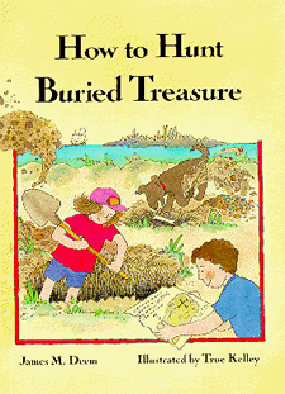Hardcover edition, 1992.Paperback edition, 1994. |
Selected Stories from this Book ~~ Related Books by James M Deem: How to Read Your Mother's Mind ~~ |
Have you ever dreamed of finding an old map and following it to a spot where a pirate buried a chest full of glittering gold?
This book will tell you about many hidden treasures even more valuable than pirates' gold. And you will learn treasure-tracking tips that will guide you on adventures that are fun and perhaps money-making. You'll learn five important clues to look for, some dangerous treasure traps to avoid, what to do when you make a discovery, how to follow a treasure trail, and what the six types of treasure are.
I always wanted to find treasure, especially some pirate treasure.
I remember that one morning, when I was in third grade, I created a treasure adventure for myself. Without telling anyone, I went to our backyard with a shovel and dug many holes around our big oak tree. I was looking for a pirates' treasure chest, and I was sure they had buried one under our tree.
Of course, I never stopped to think that we lived 700 miles from the ocean--hardly a distance that pirates would travel overland. So I never found the treasure. But I had fun looking (and filling in the holes later when my parents found out)!
And that experience led me to research and write this book.
Reviews
School Library Journal: "Interesting, entertaining, and will make anyone want to learn more about the art of treasure-hunting."
Booklist: "An inviting handbook for kids intrigued by the subject."
Kirkus Reviews: "Rewarding reading few children will be able to resist."
Washington Post: "Breathes there a child who has not yearned, at some time or another, to find buried treasure? In his latest work of improbable nonfiction...James Deem provides a complete guidebook for would-be treasure trackers. In general, historical anecdotes alternate with practical advice about the laws of treasure trove, the importance of getting written permission before digging up someone's property, etc. Deem also stresses that treasure is in the eye of the beholder: Buttons, toys, household implements, and other artifacts can be both valuable and historically important."
